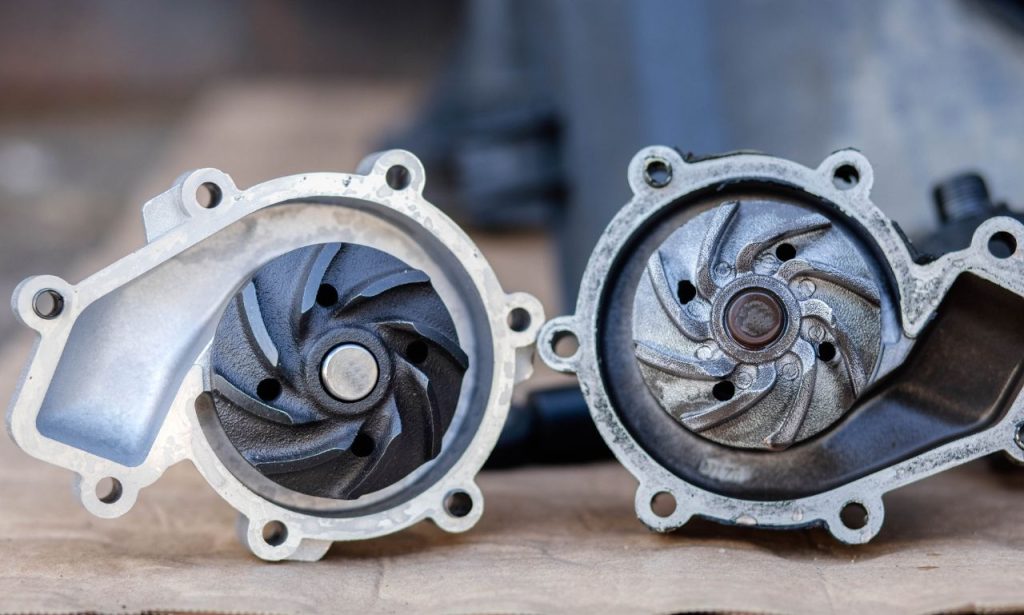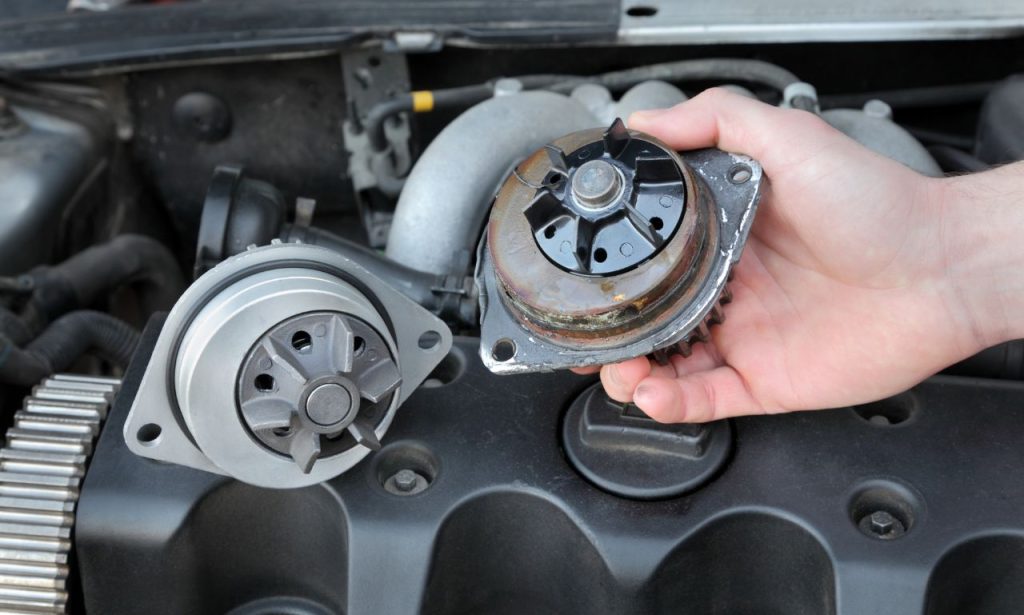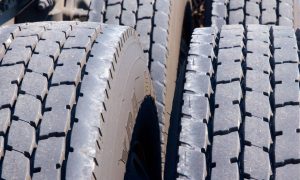You’re cruising down the road, enjoying the scenery, when a strange smell wafts through your air vents. You glance at the dashboard and your heart sinks – the temperature gauge is creeping up. Your engine is overheating, and there’s a good chance you’re facing a failing or completely blown water pump. This situation begs the question: how far can I drive with a blown water pump? The answer, unfortunately, is not as simple as a specific mileage number. It’s a complex equation involving your car’s overall health, the severity of the issue, and a dash of luck.
This article delves into the intricacies of a blown water pump, guiding you through the warning signs, the potential consequences of pushing your luck, and the safest course of action to protect your vehicle (and your wallet).
Signs of a Failing Water Pump

Before we address how far can I drive with a blown water pump?, let’s learn how to recognize the warning signs. A failing water pump rarely announces itself with a grand gesture. Instead, it whispers through subtle clues, urging you to take notice before the situation escalates:
Coolant Leaks
One of the most noticeable signs is coolant leaks. You might observe a bright green, orange, or pink puddle under your vehicle after it has been parked—a noticeable leak that’s hard to miss. Why is coolant leaking? The water pump is sealed with gaskets and seals that can wear out over time. Bad seals, such as cover rubber seal gaskets or crank seals, allow coolant to escape from the water pump’s housing or the weep hole (sometimes referred to humorously as the “wheep hole”), leading to unexplained antifreeze loss.
Overheating Engine
An overheating engine is one of the biggest signs of a faulty water pump. Keep an eye on the temperature gauge; if it starts to rise above the normal range, it’s a critical sign that something is amiss.
- Why is my engine overheating? The water pump’s primary function is the circulation of coolant throughout the engine block and cylinder head to maintain a constant engine temperature. A failing water pump disrupts this flow of coolant, causing the engine to overheat due to insufficient coolant circulation.
Grinding or Whining Noise
A failing water pump may produce a distinct grinding or whining noise emanating from the front of the engine. This sound is often more noticeable when the engine is first started or when accelerating.
What’s causing the noise? The grinding or whining sound typically originates from worn-out bearings within the water pump. As these bearings wear down, they create friction and noise, signaling the pump’s impending failure.
Steam Coming From the Radiator
In extreme cases, a completely blown water pump can cause the coolant to reach its boiling point, resulting in steam billowing from under the hood, usually from the radiator. If you witness this dramatic display, pull over immediately and turn off your engine.
Why is steam escaping? When coolant reaches its boiling point, it turns into steam, which needs to escape. This is a sign of a critical cooling system failure and requires immediate attention.
Consequences of Driving with a Bad Water Pump
Now, let’s address the elephant in the room: how far can I drive with a blown water pump? The short answer is – not far, and certainly not without risking severe damage to your engine. Here’s why:
Engine Damage

a. Blown Head Gasket
Overheating can cause the head gasket—which seals the cylinder head to the engine block—to fail.
- Risks of a blown head gasket: This failure can result in coolant mixing with engine oil (a harmful mix of antifreeze and oil), leading to oil leaks, reduced engine oil lubrication, and damage to components like crankshaft bearings and wrist pins.
b. Warped Cylinder Heads and Blocks
Excessive heat can cause warped cylinder heads or even warped cylinder blocks, compromising the engine’s structural integrity.
- Consequences: Warped components can lead to loss of compression, reduced engine power, poor fuel efficiency (affecting miles per gallon), and engine knock or detonation due to improper combustion.
c. Cracked Engine Block
In extreme cases, severe overheating can result in a cracked engine block.Impact: A cracked block causes significant coolant and oil leaks, rendering the engine inoperable and requiring a complete engine replacement—an expensive repair.
Complete Engine Failure
Continued operation with a bad water pump can cause the engine to seize.
- What happens during engine failure? The engine’s internal components may overheat and expand beyond tolerance, leading to engine seizing. This can cause the moving parts to grind to a halt, resulting in costly engine repairs or irreversible engine damage.
Costly Repairs
Repairing damage from an overheating engine can be exorbitant.
Financial impact: From replacing head gaskets to full engine remanufacturing, repairs can range from several hundred to several thousand dollars, far more than the average cost of a water pump repair.
Factors that Can Affect How Long You Can Safely Drive with a Blown Water Pump
While driving with a blown water pump is never advisable, several factors can influence how long you can limp along before facing dire consequences:
1. Type of Vehicle and Engine
- Cooling System Design: Vehicles with more robust cooling systems or older, air-cooled car engines might have a slightly longer grace period before overheating.
- Engine Size: Larger engines generate more heat, potentially leading to quicker overheating.
2. Ambient Temperature
- Hot Weather: High outside temperatures accelerate engine overheating.
- Cold Weather: Cooler conditions may slightly delay overheating but won’t prevent it.
3. Driving Conditions
- Stop-and-Go Traffic: Frequent acceleration and idling generate more heat.
- Highway Driving: Steady speeds might delay overheating but can be deceiving, as the engine is still under stress.
4. Severity of Water Pump Failure
- Partial Failure: A water pump with a minor leak might allow for short distances.
- Complete Failure: A seized water pump will cause rapid overheating, potentially within minutes.
Risks and Damages of Driving with a Blown Water Pump

Driving with a blown water pump is akin to playing Russian roulette with your engine. You might get lucky for a short while, but the potential consequences far outweigh any perceived benefits:
1. Additional Engine Component Damage
- Radiator and Hoses: Overheating can cause radiator hoses to burst or the radiator leak.
- Thermostat and Sensors: Excessive heat may damage the t-stat and coolant temp switch, leading to irregular temperature readings.
- Belts and Pulleys: Continuing to drive can cause further damage to belts and pulleys, increasing repair costs.
2. Stranded on the Road
- Risk of Breakdown: An overheating engine may go into limp mode or stall completely, leaving you in need of roadside assistance.
3. Increased Accident Risk
- Loss of Engine Power: Sudden power loss can lead to dangerous situations, especially at high speeds.
4. Costly Repairs and Towing Fees
- Financial Strain: In addition to engine repairs, you’ll incur costs for towing and potential damages to other components.
Preventive Measures to Avoid Water Pump Failure
While you can’t always predict when a water pump will fail, several preventive measures can significantly reduce the risk and keep your engine running cool and happy:
Regular Maintenance and Inspection
Just like any other mechanical component, your car’s cooling system requires regular maintenance to ensure optimal performance and longevity. This includes:
- Visual inspection: Regularly inspect the water pump, hoses, and belts for signs of wear and tear, leaks, or damage.
- Coolant flush and refill: Follow your vehicle manufacturer’s recommended intervals for flushing and refilling the coolant. This helps prevent corrosion and ensures optimal cooling system performance.
- Professional inspection: Have a qualified mechanic inspect your cooling system during regular maintenance checks for early detection of potential issues.
Replacing Coolant and Belts as Recommended
Using the correct type of coolant and replacing it at the recommended intervals is crucial for preventing corrosion and maintaining the cooling system’s efficiency. Similarly, replacing worn-out belts at the first sign of wear can prevent them from snapping and causing further damage.
Why is coolant type important? Using the wrong type of coolant can lead to corrosion, clogging, and reduced cooling efficiency. Always refer to your owner’s manual for the recommended coolant type.
Keeping an Eye on the Temperature Gauge
Your car’s temperature gauge is your first line of defense against overheating. Make it a habit to glance at the gauge periodically, especially during long drives or in hot weather. If you notice the needle creeping up, pull over and investigate the issue.
What should I do if the temperature gauge rises? If the temperature gauge rises above the normal range, pull over to a safe location, turn off the engine, and allow it to cool down. Do not attempt to continue driving.
Addressing Leaks Promptly
Coolant leaks, no matter how small, should never be ignored. A minor leak can quickly escalate into a major problem, so address them promptly by having your cooling system inspected and repaired by a qualified mechanic.
Can I fix a coolant leak myself? While some minor leaks can be temporarily fixed with sealant products, it’s always best to have a qualified mechanic diagnose and repair the leak properly.
What to Do if Your Water Pump Fails While Driving
Despite your best efforts, water pumps can fail unexpectedly. If you find yourself in this situation, follow these steps to minimize damage and ensure your safety:
Stay Calm and Pull Over Safely – Don’t Panic
If you notice signs of a failing water pump, such as rising temperature, strange noises, or steam, stay calm, signal, and pull over to a safe location as soon as possible.
Why is it important to pull over immediately? Continuing to drive with a failing water pump will only worsen the damage and increase the risk of a complete engine failure.
Call for Roadside Assistance
Once you’re safely off the road, turn off the engine and call for roadside assistance. Explain the situation and request a tow to a trusted mechanic or dealership.
What information should I provide to roadside assistance? Provide your exact location, a description of your vehicle, and the nature of the problem. Be clear that you suspect a blown water pump and require a tow to a mechanic.
Do Not Attempt to Repair the Water Pump Yourself
Unless you’re a qualified mechanic with the necessary tools and expertise, do not attempt to diagnose or repair the water pump yourself. Tampering with the cooling system can be dangerous and may void your vehicle’s warranty.
Why should I avoid DIY repairs? Cooling system repairs require specialized knowledge and tools. Attempting to fix it yourself can lead to further damage, injury, or voiding your warranty.
Have Your Vehicle Towed to a Repair Shop
Having your vehicle towed to a reputable repair shop ensures that the problem is diagnosed and repaired correctly by experienced professionals. They can assess the extent of the damage, replace the faulty water pump, and address any other underlying issues.
How do I choose a reputable repair shop? Look for shops with certified mechanics, positive customer reviews, and a history of transparent pricing. Don’t hesitate to ask for recommendations from friends or family.
Conclusion
So, how far can I drive with a blown water pump? The answer, in short, is not far enough to risk the potential consequences. A failing water pump is a serious issue that requires immediate attention. Ignoring the warning signs and continuing to drive can lead to costly repairs, potential engine failure, and even dangerous driving conditions.
By understanding the signs of a failing water pump, recognizing the risks of driving with a compromised cooling system, and taking preventive measures, you can protect your investment, avoid costly repairs, and ensure a safe and enjoyable driving experience.
ALSO READ: How Does a Bad Catalytic Converter Affect Your Car?
FAQs
While some temporary fixes, like using a sealant product or bypassing the heater core, might buy you some time, they are not long-term solutions. These methods are unreliable and can potentially cause further damage. It’s crucial to have a qualified mechanic address the issue promptly.
The cost of replacing a water pump varies depending on the make and model of your vehicle, labor costs in your area, and whether any additional repairs are necessary. On average, you can expect to pay between $300 and $800 for a water pump replacement.
Replacing a water pump is a relatively straightforward procedure for a qualified mechanic. Depending on the vehicle’s complexity and accessibility of the water pump, the repair can take anywhere from 2 to 5 hours.
While constantly adding coolant might seem like a solution, it’s like putting a band-aid on a bullet wound. Driving with a leaking water pump, even while adding coolant, risks catastrophic engine damage and is highly discouraged.




